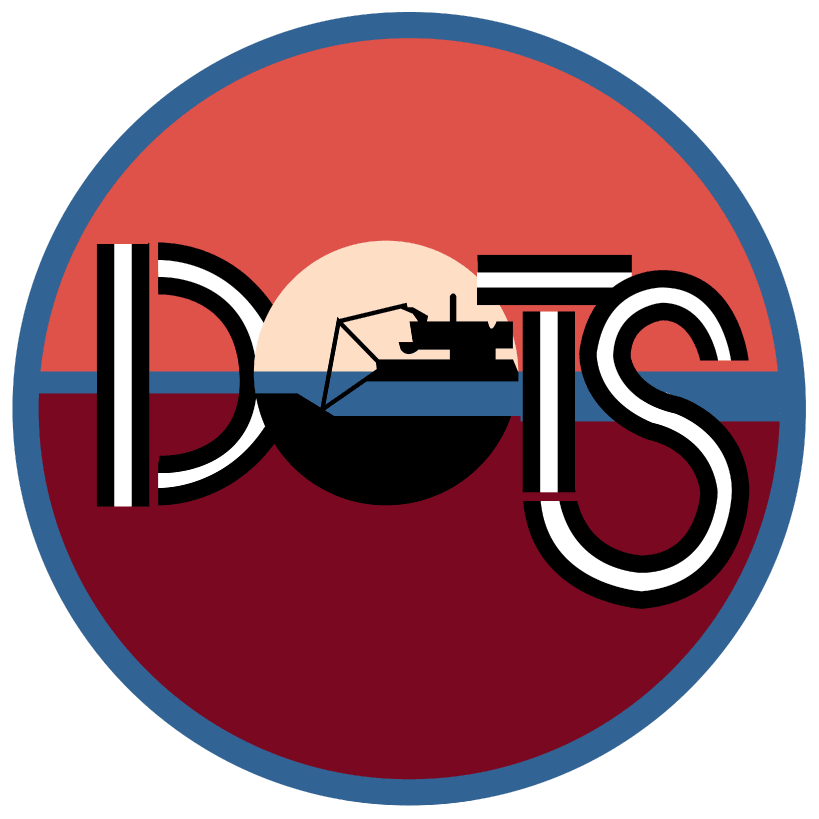Location and date
Beneficial Use Categories (see USACE Engineer Manual 1110-2-5025 for more details)
Dredged sediment provides opportunities for a number of environmental, economic, and aesthetic beneficial uses. Innovative beneficial uses appear to be unlimited, and over 1,300 cases of beneficial uses of disposal sites have been documented in North America alone.
Seven broad categories of beneficial uses have been identified, based on their functional use of dredged sediment at placement sites. They are:
- Habitat development
- Wetland habitat: This is a broad category of periodically inundated communities, characterized by vegetation that survives in wet (hydric) soils. These are most commonly tidal freshwater and saltwater marshes, relatively permanently inundated freshwater marshes, bottomland hardwoods, freshwater swamps, and freshwater riverine and lake habitats.
- Upland habitat: A broad category of terrestrial communities, characterized by vegetation not normally subject to inundation. Types may range from bare ground to mature forest.
- Aquatic habitat: Submerged habitats extending from near sea, river, or lake level down several feet. Examples are tidal flats, oyster beds, seagrass meadows, fishing reefs, clam flats, and freshwater aquatic plant beds.
- Island habitat: Islands are upland and/or high zone wetland habitats distinguished by their isolation and particular uses, and completely surrounded by water or wetlands.
- Beach nourishment: Shoreline stabilization and erosion control is a concern along many ocean beaches and the shorelines of the Great Lakes. Four major types of beach nourishment occur along U.S. shorelines: new borrow sediment not connected with maintenance dredging, maintenance dredging of an existing channel, placement in the littoral zone to allow beach nourishment, and rehandling of stockpiled sediment.
- Parks and recreation: Recreational uses of dredged sediment placement sites range from projects as simple as fill for a recreation access road to projects as large as Belle Island in the Detroit River on the United States-Canada border and the Lake Vancouver Park, WA, to projects as complex as the 1,800 ha Mission Bay development in San Diego, CA, supporting both public and private commercial and noncommercial recreation facilities.
- Cultivation:
- Agriculture: There is interest in the agricultural use of dredged sediment, especially by cost-sharing sponsors looking for partners in placement sites. The addition of dredged sediment can improve the physical and chemical characteristics of a marginal soil. Some placement sites, especially in river systems, have provided livestock pastures.
- Horticulture: Horticulture crops are generally considered vegetable, fruit, nut, and ornamental varieties of commercially grown plants. Dredged sediment applications on soils for vegetable production, orchards, and nurseries do not differ from the agricultural planning and uses of dredged sediment.
- Forestry: Improvement of marginal timberland with applications of dredged sediment. There are several rapidly growing pulpwood species that could be grown in large placement sites with several compartments once the compartments are nearing completion.
- Aquaculture: Aquaculture in a dredged sediment containment area was first explored by the USACE during the Dredged Material Research Program. Dredged sediment containment sites commonly possess structural features such as dikes and water control devices that may enhance their suitability as aquaculture areas.
- Strip mine reclamation, solid waste landfill, and alternative uses: Four beneficial uses of dredged sediment that are relatively new concepts have proven to be feasible in laboratory, field, and District tests: 1) the reclamation of abandoned strip mine sites that are too acidic for standard reclamation practices; 2) the capping of solid waste landfills, 3) the use of sediment to protect landfills; and 3) the use of sediment to manufacture bricks and hardened materials such as road surfaces.
- Multipurpose uses and other land use concepts: With careful engineering design, construction, long-term coordination and planning, and proper implementation of operational and maintenance procedures, a placement site having combinations of uses may be developed. Multipurpose use is encouraged. A park and recreational development built over an existing solid waste landfill using dredged sediment as a cap is an example of how several of the beneficial uses can be lumped into a single multipurpose project.
- Construction and industrial/commercial uses: The economic potential and social productivity of industrial/commercial activities provide a strong incentive for urban growth and development. These activities have flourished in natural harbors and along urban waterways where raw materials can be received and finished products shipped most economically. Industrial/commercial development near waterways has been aided by the availability of hydraulic fill sediment from nearby dredging activities.
Decision Process
Contaminant Status of Materials
Evaluating the contaminant status of the dredged sediment is the first step to determine if the sediment is acceptable for beneficial use. Refer to guidance documents for addressing contaminant issues. In general, highly contaminated sediments will normally not be suitable for most proposed beneficial use applications and particularly for proposed wildlife habitat development projects. However, after appropriate examination, testing, and treatment, the sediment may be classified as suitable. Dredged sediment from ongoing activities (maintenance dredging) should be reevaluated periodically to ensure that the sediment contamination level has not changed since the last dredging cycle. Guidance for evaluating the contaminant status of dredged sediment can be obtained from local, state, or national regulatory agencies.
Site Selection
Selecting a placement site and choosing a beneficial use are interdependent decision processes. Dredged sediment may have multiple beneficial use options and there may be several different potential placement sites. Often, the characteristics of the sediments determine or limit the types of sites that may be selected and the beneficial uses that can be achieved. Once a potential use and site have been identified various implications should be assessed such as technical feasibility, environmental acceptability, cost/benefits, and legal constraints.
Technical Feasibility
The technical feasibility of implementing a particular beneficial use at a designated site must be evaluated. Various constraints must be considered, such as pumping distance, water depth, access, etc. If technical feasibility constraints will not allow the proposed beneficial use and/or selected site, then alternate beneficial use or disposal options must be pursued.
Environmental Acceptability
Before any substantial work can be undertaken, the environmental impact prior, during, and subsequent to construction of the proposed project must be investigated. An Environmental Impact Assessment (EIA) should be performed on all projects. Major projects will also require an Environmental Impact Statement (EIS). An EIA is generally a qualitative evaluation document of potential environmental impacts, whereas an EIS is more rigorous and quantitative, based on significant sampling and testing. The chosen beneficial use options may be pursued if it is concluded that the environmental effects will not be significantly harmful. Permission to undertake or permit the dredged sediment placement may be denied if the proposed work is likely to have any significant adverse environmental effects.
Cost/Benefit
After one or more potential beneficial use options have been identified and the engineering methods have been defined, estimated costs and benefits should be analyzed. The costs are usually estimated by standard methods. Options for beneficial use may lower the cost for disposal of dredged sediment in many instances, but increase costs in other scenarios. Costs are frequently lower when distances from dredging site to disposal site are reduced. In cases with higher costs, the increase may be more than offset by the value of the benefits. Although difficult to quantify, intangible benefits should always be taken into account when assessing overall costs and benefits. These benefits may include improved habitat, esthetic enhancement, a more viable local community, and other benefits.
Legal Constraints
Early and concentrated coordination between permitting agencies, local interests, and environmental protection agencies is mandatory. Some beneficial use options or sites selected may be prohibited or rendered inappropriate by law or regulation. However, some beneficial uses may actually be encouraged through grants or subsidies by governmental or private organizations. Guidance for legal policy and regulations can be obtained from local, state, or national regulatory agencies.
Sediment types
Rock
Rock may vary from soft marl via weak rocks (for example, sandstone and coral) to hard rocks (such as granite and basalt) and vary in size from large to small. Rock may also result from blasting, cutting, or ripping and is seldom of only one type. Whether the rock can be used economically depends on its quantity and size. Rock is a valuable construction material and may be used for both terrestrial and aquatic projects. Usually, dredged rock is not contaminated.
Gravel and Sand
Gravel and sand (granular) are generally considered the most valuable materials derived from a dredging project. Gravel and sand are suitable for most engineering uses without processing. Some additional processing (such as freshwater washing) may be needed for certain agricultural or product uses. Granular material can be used for beach nourishment, parks, turtle nesting beaches, bird nesting islands, wetlands restoration and establishment, and many other applications. Granular material is usually not contaminated.
Consolidated Clay
Consolidated clay varies from hard to soft clay and is material obtained from capital dredging. The material may occur as lumps or as a homogeneous mixture of water and clay, depending on the material type and the dredging equipment used. If the water content is high, dredged clay may have to be dewatered before being transported. Possible uses of consolidated clay range from forming industrial products, such as bricks and ceramics, to building erosion control structures, such as dikes and berms. Consolidated clay is not usually contaminated.
Silt/Soft Clay
Silt and soft clay are the most common materials acquired from maintenance dredging in rivers, canals, and ports. These materials are most suitable for agricultural purposes (such as topsoil) and all forms of wildlife habitat development. Depending on national regulations and laws, mildly contaminated silt and soft clay may be used for some engineered uses or product uses such as bricks, tiles, and ceramics. Because of the high water content, silt and soft clay must be dewatered for any product use. Dewatering can require months or years and, depending on the draining process used, can require temporary storage.
Mixture (rock/sand/silt/soft clay)
Capital dredged material usually occurs in layers as deposited from some past hydraulic process and may require the use of different dredging methods. Maintenance dredged material is usually a mixture of materials such as boulders, lumps of clay, gravel, organic matter, and shells, with varying densities. Even though engineered and product uses will be somewhat restricted because of the mixture, mixed material may be used for a wide range of beneficial uses, such as land reclamation, habitat improvement, and landfill capping.
| Dredged Material Sediment Type | |||||
|---|---|---|---|---|---|
| Examples of Beneficial Use Activities | Rock | Gravel & Sand | Consolidated Clay | Silt/Soft Clay | Mixture |
| Land creation | X | X | X | X | X |
| Land improvement | X | X | X | X | X |
| Berm creation | X | X | X | X | |
| Shore protection | X | X | X | ||
| Replacement fill | X | X | X | ||
| Beach nourishment | X | ||||
| Capping | X | X | X | ||
| Construction materials | X | X | X | X | X |
| Aquaculture | X | X | X | ||
| Topsoil | X | X | |||
| Wildlife habitats | X | X | X | X | X |
| Fisheries improvement | X | X | X | X | X |
| Wetland restoration | X | X | X | ||



